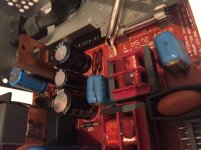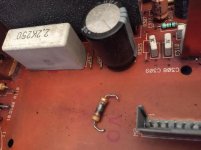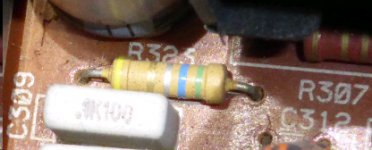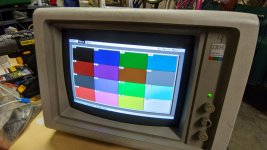Anyone want to help +1 to the pile of repaired 5154s?
A friend recently won an auction for a small haul of IBM stuff, mostly faulty. Among them was a 5154 which they'd bee wanting for ages. I offered to repair as much of the IBM stuff as I could, including the 5154, and got myself a 5151 I wanted and a few other doodads in exchange.
This 5154 has had a lot of hours put in so far, and I am not too sure where to go on yet.
1) RIFA caps in PSU, and the commonly bad small caps had to be replaced for it to fire up.
2) the pots relating to sync and size were all wrong. I got that working for both Mode 1 and Mode 2.
3) someone else had already had a go it seems. The convergence was way off and one of the ring tabs was snapped off. I think they tried to adjust convergence without loosening the main ring. I have re-converged it the best I can. It is still imperfect around the edges. I don't know if that's normal for this monitor (it's still better than my 5153, but my 8513 is perfect). First time I've tried converging a CRT, and I spent a good few hours.
4) Nearly there I think. The problem now is that the image is wobbly on startup for a good few minutes. The wobble get less and less until it looks like a vibration (not seen on camera), until finally, the picture is solid. But after that, it still glitches occasionally, and one time, it even went complete out of focus for a moment before coming back.
This video shows all of that. The out-of-focus event is near the end.
I have replaced all the caps on the video board, and some of them on the main board. The remaining caps for the main board are on their way.
I have applied fresh solder to most of the joints and inspected the rest.
Someone said it may be the tripler. I have found a replacement, but the shipping cost is high, so I would rather rule other things out first.
The FBT has no part number, but that person said the tripler is far more likely to go than the FBT.




